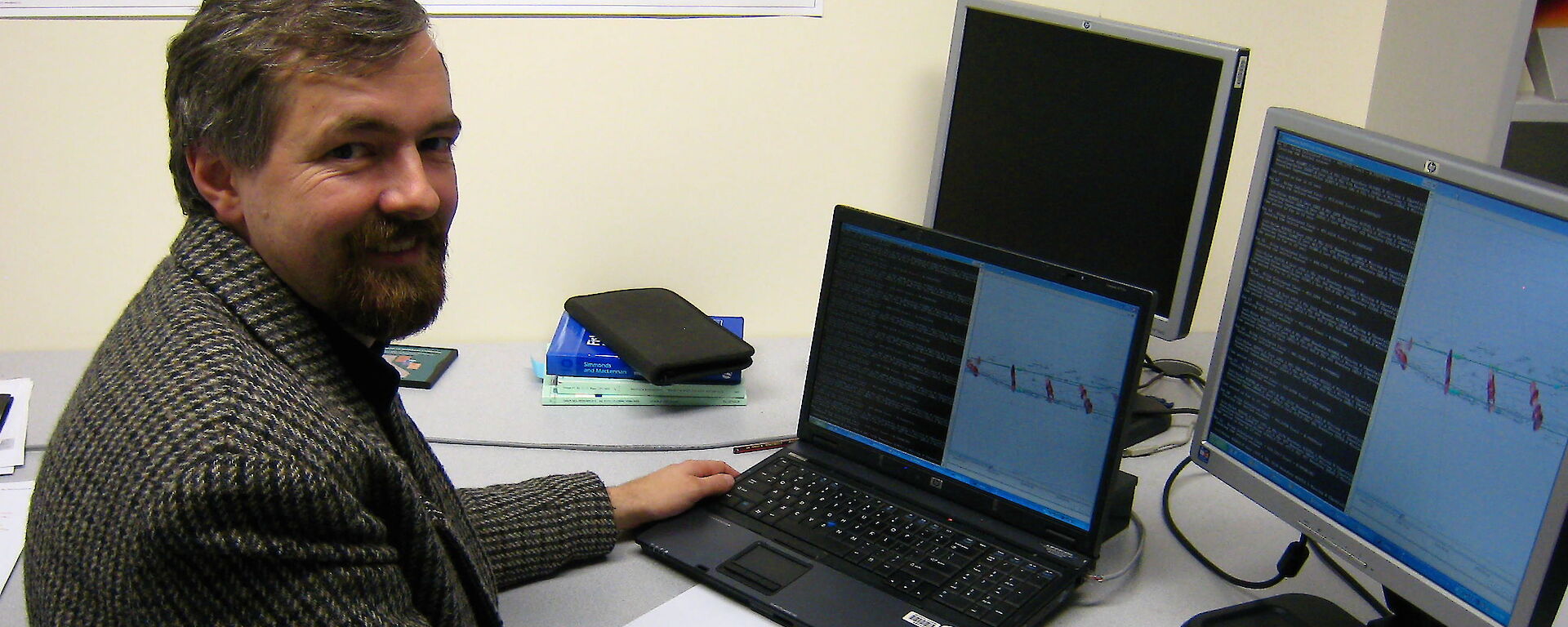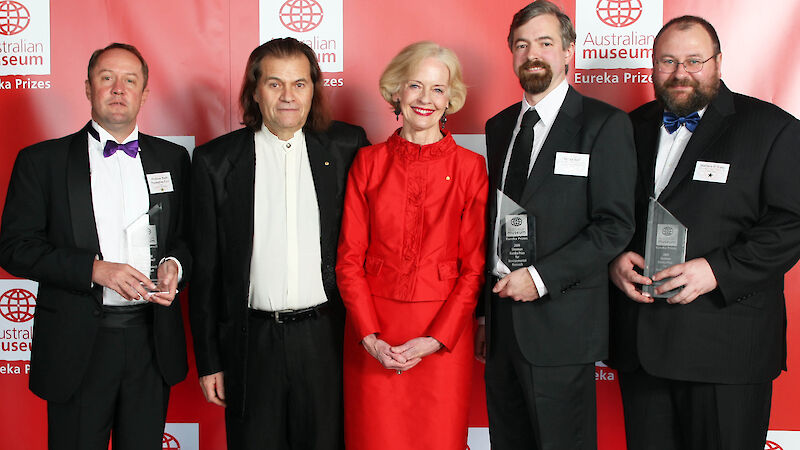‘When you encapsulate scientific ideas in software, those ideas can then be communicated between scientists and between scientists and everyone else,’ he says.
In fact, Ian and his colleagues have been so successful in capturing and sharing conservation planning knowledge through software, that they won the $10,000 Sherman Eureka Prize for Environmental Research in August.
The prize is one of several prestigious Australian Museum Eureka Prizes which are awarded annually for research and innovation, scientific leadership, school science, and science communication and journalism.
Dr Ball, in collaboration with Professor Hugh Possingham and Mr Matthew Watts, both from the University of Queensland, won the award for their ‘Marxan’ software, which is being used to design land and marine reserves in 110 countries and counting. This global spread can be attributed to Marxan’s strength as a conservation planning tool, its free availability online and its capacity to be used as a stand-alone product or attached to other software.
Marxan has been used to assist a range of conservation planning activities, including: establishing management zones for the Great Barrier Reef that accommodate social, economic and conservation needs; to help The Nature Conservancy in the United States conserve California’s Channel Islands; and to assist the Australian Government to develop marine protected areas in Commonwealth waters.
The software was developed as part of Dr Ball’s PhD thesis in 2000, under the supervision of Professor Possingham. Dr Ball’s task was to apply new mathematical techniques to the problem of designing land or marine conservation reserves, to find a method that would provide the best outcome. The problem is mathematically similar to that faced by hospitals or airports when planning staff rosters. Just as rosters need to ensure that people with the right mix of skills are working together, while complying with rules and restrictions about when people can work, conservation reserves need to incorporate representative habitats and animal and plant species, while accommodating social and economic needs. The effects of any changes to rosters or reserves also need to be easily identifiable
‘Computers allow us to mathematically optimise these sorts of problems now, because they can grind through so many permutations quickly and score the relative merits of different solutions against your objectives,’ Dr Ball says.
‘However, some mathematical techniques are better than others at coping with complexity and changes.’
Dr Ball found a method called ‘simulated annealing’ provided the best result. He describes the way it works using a physical analogy: ‘Suppose you want to find the lowest point on a relief map. If you drop a marble on it, it will roll down hill, but it won’t necessarily end up in the deepest valley. With simulated annealing, you shake the relief map so that the marble bounces around a bit, and you shake it less and less as time goes on. It will tend to get stuck in the deepest valley. In terms of reserve design, this will give you a good solution, but not necessarily the optimal one. However, you can keep track of all the places the marble stopped along the way, and choose the best option.'
Dr Ball says the quality of the options will be effected by the quality of the data used and the length of time the software is run for. However, one of the major benefits of the automated process is that the affect of changes in reserve variables (such as the addition of a species or a new land parcel) can be quickly assessed.
‘The Nature Conservancy produced maps of their proposed reserves and took them to their stakeholders for feedback, then ran the changes through the software and produced new maps overnight,’ Dr Ball says.
While Marxan continues to evolve and disperse across the globe, Dr Ball has moved on to new and different challenges at the Australian Antarctic Division. He is currently undertaking data analysis relating to whale distribution and habitat use, as part of the new Southern Ocean Research Partnership. Prior to this, he developed a fisheries simulator that has been used for fisheries management by the Commission for the Conservation of Antarctic Marine Living Resources.
‘I always thought I’d be toiling with numbers and obscura in the background, but my recent work has taken me in quite a different direction,’ he reflects.
As for the flow-on effect of the Eureka Award, Dr Ball hopes the heightened profile of the software will help raise funds to support students to attend a Marxan training program and conference, planned for 2010. For Dr Ball, the impact is more personal.
‘It will probably be the high watermark of my career,’ he says.



